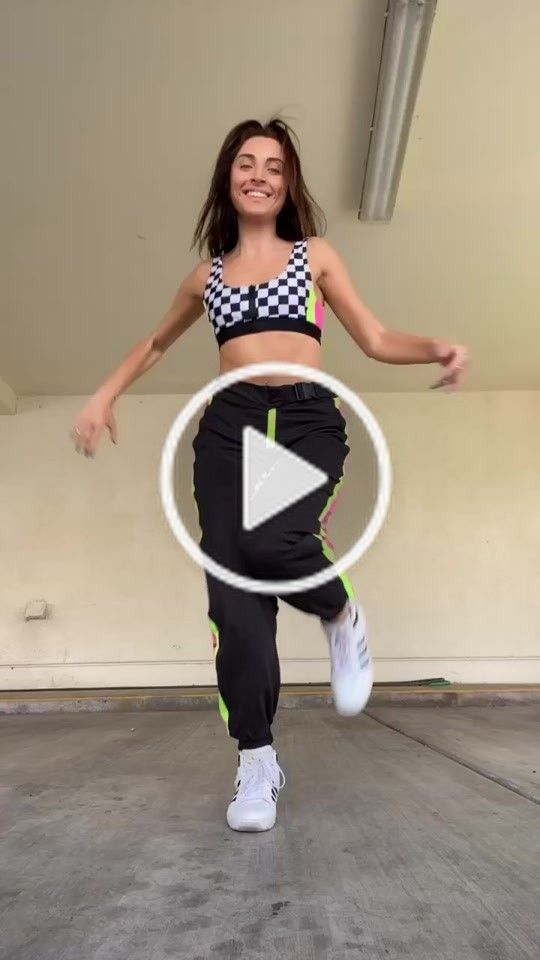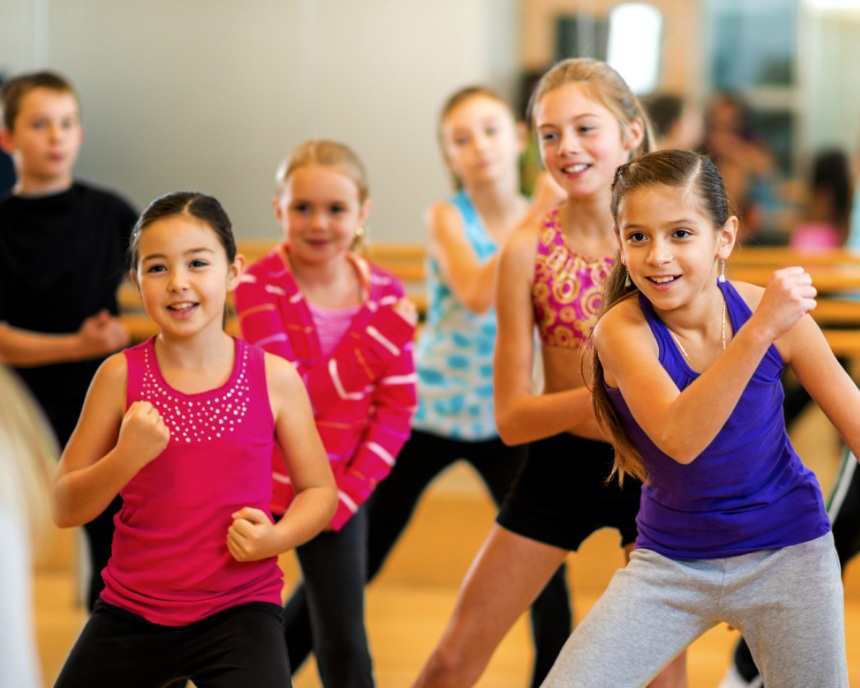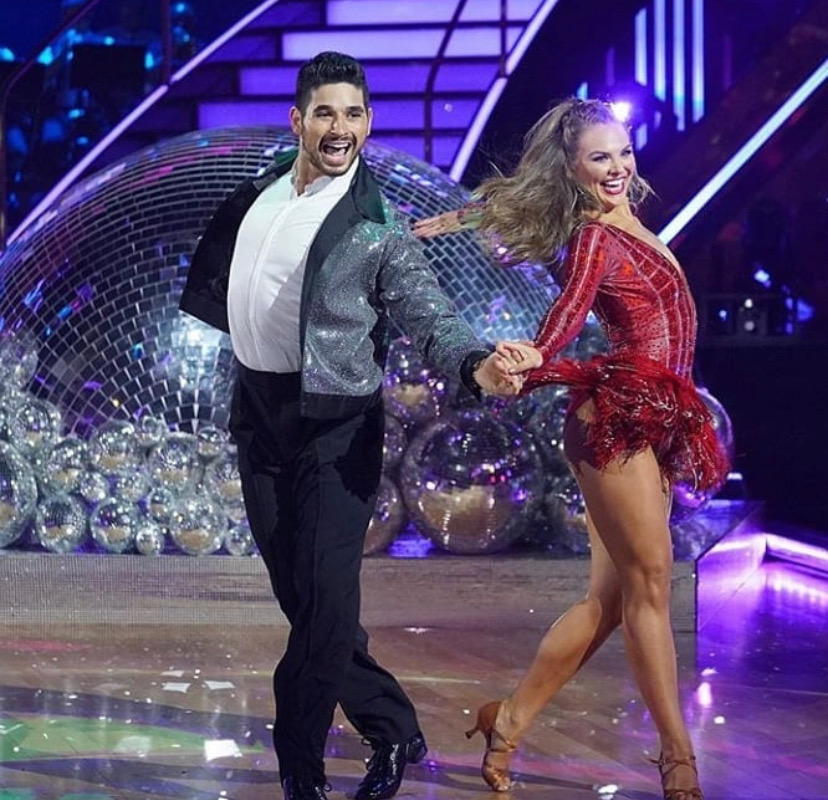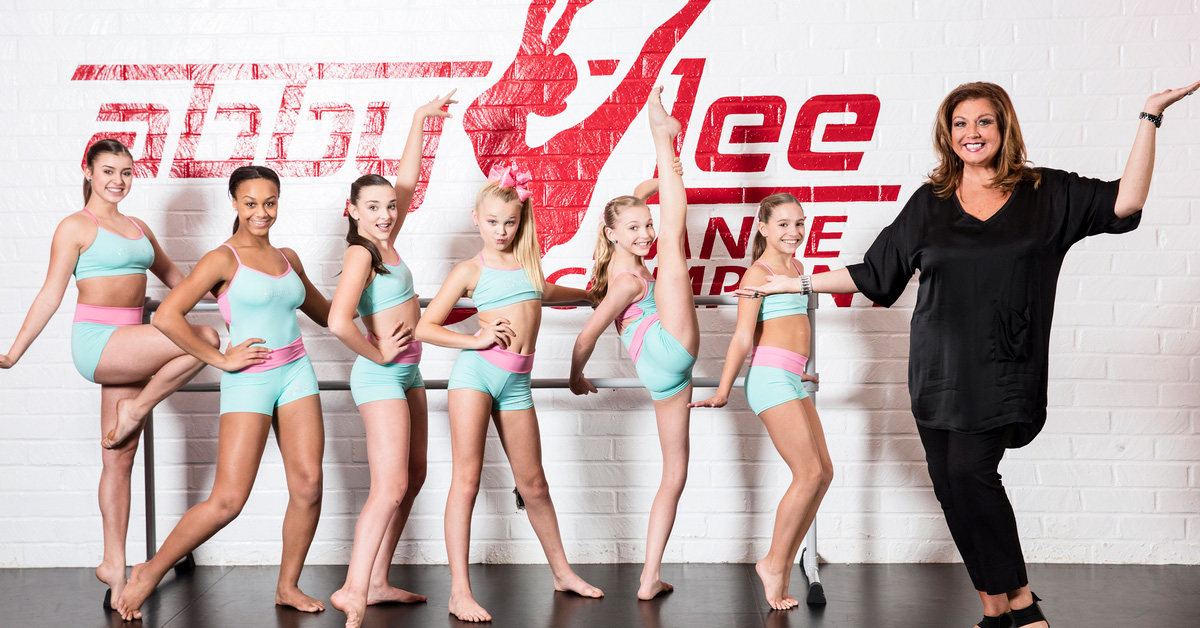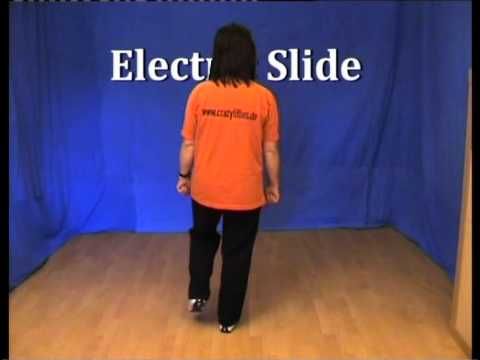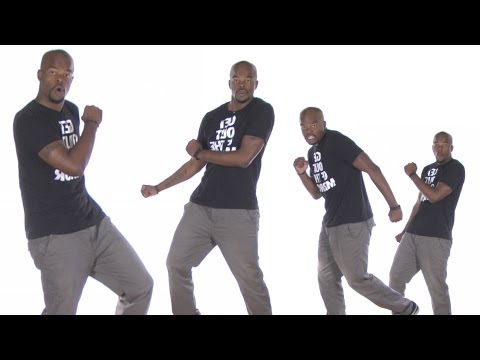Learn how to pole dance dvd
Learn To Pole Dance With The Best Pole Fitness DVDs In 2021
Pole dance DVDs might seem a little outdated in today’s technological advanced world but there are some amazing DVDs with pole dancing workouts for beginners and those advanced pole fitness enthusiasts.
They are a great addition to your weekly pole class or to learn from the very start if there are not any lessons close by.
If you use DVDs in addition to your weekly class or you use your purchased DVD twice a week you will be dancing like a pro in no time at all.
Over the years the pole dance DVDs which are good to learn from have been sieved from the ones which are of lower quality.
Contents
- 1 Which is the Best Pole Fitness DVD?
- 2 Our Best pole Fitness DVD!
- 2.1 Jamilla Deville - Art of Pole
- 2.2 Jamilla Deville - Routines
- 2.3 The Pole Fitness Series
- 2.4 Pole Motion
- 2.5 Pole Dance & Fitness
- 3 Benefits of learning from DVDs
- 4 Disadvantages of Learning from a Pole Dancing DVD
- 5 Where to Buy Pole Dance DVDs From?
Which is the Best Pole Fitness DVD?
So many pole dancing dvds have been released over the last ten years. It’s hard to know which is the best to buy when you are just starting out. All of the DVD collections listed below have been created by some of the bigger names in pole fitness. You will find that they are all worth the money you spend on them.
Our Best pole Fitness DVD!
Felix Cane - Pole Mastery Series
LEARN: 100 pole moves, tricks, transitions, variations and artistic points
check Best Price
They Say:
World Champion Felix Cane Pole Dance DVD Instruction Series. Disc 5: Flexibility Improve your flexibility for overall health and well-being as well as facilitate beautiful lines in your pole dancing Appropriate from beginner to advanced (even if you’re NOT a pole dancer) All stretches explained step-by-step, specially sequenced and timed as you participate directly with Felix Join us as pole dance has gone mainstream! Expect amazing things from the first ever instructional DVD series by World Champion Pole Dance Artist and Cirque Du Soleil performer, Felix Cane.
Start with a full warm-up, and then get fit and have fun as you learn step-by-step from the very best in the world.
We Think:
Felix Cane is a Two time World Champion Pole Artist and a Cirque Du Soleil sensation. She lives in Perth, Western Australia. She now owns the Polaris studio in Perth. She created the pole mastery series back some years ago.
There are five DVDs in the series where you will learn well over 100 pole moves, variations, transitions and artistic points.
The series includes a full-length warm-up, step-by-step instruction, proven methods for safely gaining flexibility, artistry secrets, signature acrobatic pole moves, and breath-taking routines.
Each video provides detailed, step-by-step instructions for each move or routine.
The Pole Mastery Series will teach you how to master the art of pole dance and get fit. It’s a comprehensive DVD series!
It’s a great series to learn and improve your pole dancing skills.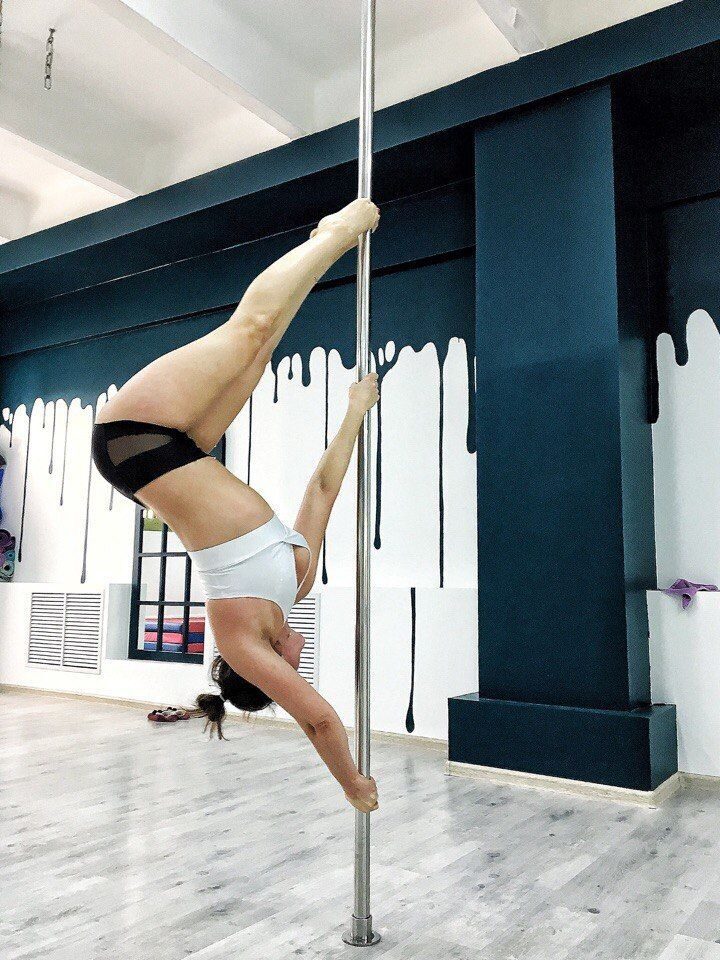
The best place to buy this DVDs series is second hand on eBay.
Jamilla Deville - Art of Pole
Jamilla Deville is one of the world’s best-known pole dancers, and a pioneer of the art form. Jamilla started pole dancing in the year 2000.
She went on to be voted by the global pole community as IPDFA International Instructor of the Year in 2010 & 2011, as well as Pole Dance International Magazine’s Instructor of the Year 2011.
Jamilla created The Art of Pole DVD series, which is also known as “the pole dancer’s bible” by some. The Art of Pole Collection became a top-selling pole dance instructional DVD series.
The Art of Pole takes you from the very basics of pole dancing and instructs you step by step in the finer points of technique.
Every DVD in the series includes a thorough warm-up, cool down, conditioning and stretching section, as well as live performances from Jamilla (with a cameo from pole goddess, Fawnia Dietrich).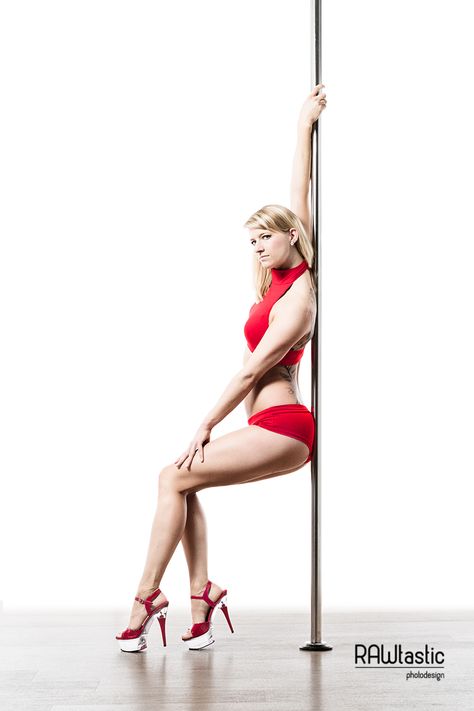
Learn walks, spins, climbs, inversions, mounts and dismounts; smooth transitioning, snappy combinations, and the touches that make pole moves into pole dance.
This DVDs series is still available to buy brand new.
Jamilla Deville - Routines
After the success of the Art of Pole DVD series mentioned above Jamilla went on to produce two more DVDs simply called Jamilla Deville – Routines.
These two DVDs teach you how to perform pole dance routines around your pole. Turn the moves you learnt in the art of pole dance series into a routine with these easy to follow routine DVDs by Jamilla.
These DVDs can still be bought brand new.
The Pole Fitness Series
We have to admit that we don’t know much about this DVD series apart from that they are still available to buy brand new. However, our first impressions of the cover shown in the advert aren’t very good. They look very amateurish.
There is three volumes in the series. The first is 40 minutes cardio workout that does not involve any spins or airborne moves. So is suitable for beginners.
The first is 40 minutes cardio workout that does not involve any spins or airborne moves. So is suitable for beginners.
The second DVDs is focused on toning and building strength. It targets the upper and lower body as well as the core utilising exercises that use only a dance pole and your own body weight. The seller claims that the DVD will help you build the strength you need to safely execute all those spins, lifts and crazy tricks!
The third DVDs is all about Stretching & Flexibility – it shows you how to work with your dance pole to help improve your flexibility. Using your pole you will stretch muscles that are hard to get at. This volume also includes a 20-minute stretching routine that you can do anytime.
Each DVD costs $25 or you can buy it in a bundle for $65 saving $10.
Pole Motion
Pole Motion was born in 2011, with the release of a pole fitness DVD featuring Justine McLucas. Pole Motion was born in 2011, with the release of a pole fitness DVD featuring Justine McLucas. Pole motion only released one DVD, which features step by step instruction, covering basic spins, poses, pole sits, floorwork and hand grips.
Pole motion only released one DVD, which features step by step instruction, covering basic spins, poses, pole sits, floorwork and hand grips.
What you get on the DVD is a fun warm up routine around the pole, 3 lessons, 4 routines, 3 tone up sessions, a stretch out session and special bonus features.
Pole motions DVD featured in Glamour Magazine, Health & Fitness Magazine, The Sunday Mirror and handbag.com and got a 5-star rating on Amazon!
This DVD is suitable for beginners and those looking for a refresher course on moves they probably have learned in class.
This DVD is still available to buy new. It costs £11.99.
Pole Dance & Fitness
This single DVD delivers an intensive course aimed at intermediates.
With the help of two assistants Jeannine Wilkerling: German pole dance champion from 2007 to 2010; shows you how you can advance your own potential of figures based on pole sports basics.
The DVD which takes one hour to complete shows you step-by-step exercises of the rotating pole such as inverts and many other challenging figures.
It delivers a whole-body fitness workout but leaves lots of room for your own creativity.
We have to admit we have not tried this DVD but it gets 4 out of 5 stars on Amazon. The reviews suggest that “Everything is explained and shown very well”, “Just super helpful.” and “I think the DVD is well suited for beginners. Everything is well explained and also presented several times for each page.”
However, the DVD is in German with English subtitles.
So take the language into consideration if you plan to buy this.
The good thing is that this is still available to buy brand new.
Benefits of learning from DVDs
Pole dance DVDs are a great way to learn the art of pole fitness. Whether you’re a beginner you can learn the moves needed for this great form of fitness. If you’re a pro you can sharpen your skills and take them to a new level.
Learn at home
Pole dance DVDs are great if you can’t make it to class.
You can revisit moves you have already learnt or learn new moves. Many DVDs will show you how to link together the moves you have learnt into a routine. So not only will you get build strength but you will also get a cardio workout by linking together spins, tricks and transitions.
Many DVDs will show you how to link together the moves you have learnt into a routine. So not only will you get build strength but you will also get a cardio workout by linking together spins, tricks and transitions.
Learn at a convenient time
You can’t make class because you’re not sure you will make it out of work on time or you have no one to look after the kids but you still want to learn how to pole dance. DVDs are the perfect way. You can train at a time that fits around work, social occasions and childcare.
Cost
DVDs are cost efficient when you compare it to subscription fees for apps and online lessons. You pay once and the DVD is yours for life.
Disadvantages of Learning from a Pole Dancing DVD
The main disadvantage of DVDs is that once you have done it a few times you might get a little bored of doing it and then need to buy a new one. Also once you have mastered the moves for that level, especially beginner moves the DVD might become obsolete.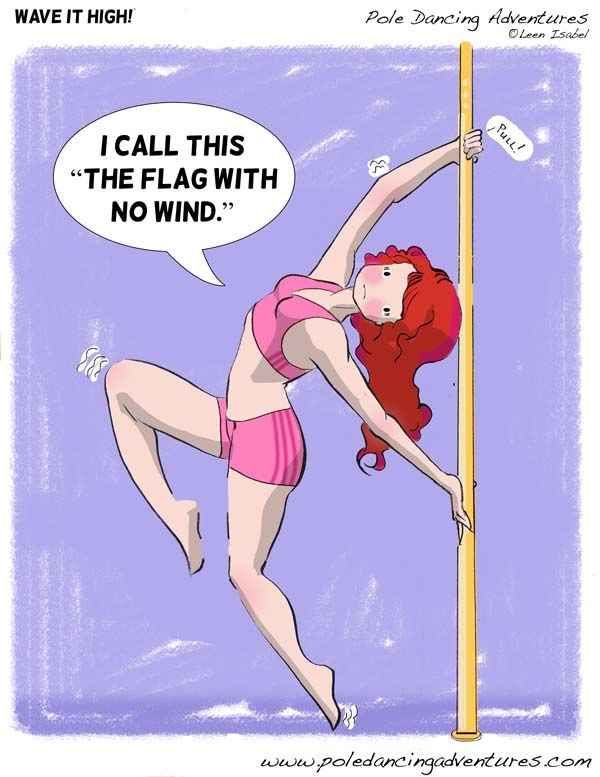
The other thing with DVDs is that you need to take your DVD and TV into the room you train, or for some people, you will need to bring the entire set-up outside with you. Unless of course, you have a DVD fitted into a laptop.
This is one reason why pole dance apps are a better way to learn in this day and age because you can have them running on your very portable phone or tablet.
Where to Buy Pole Dance DVDs From?
If you want to learn how to pole dance at home and you have a DVD player then pole dance DVDs can be a great way to learn.
Many of the DVDs created over the last ten years or so are now out of production so the best place to pick up your DVDs is on eBay although it is still possible to buy a new copy of some DVDs on Amazon.
Pole Motion DVD - The Pole Fitness Workout
£11.99 £14.99
QUANTITY
DETAILS
Get fit, have fun and look sexy with the pole fitness workout.

Whether you're new to pole fitness or an experienced pole dancer looking for a fun workout that will help improve your technique, the Pole Motion DVD is for you!
It features step by step instruction, covering basic spins, poses, pole sits, floorwork and hand grips.
It's packed with 3 lessons, 4 routines, 3 tone up sessions, a fun warm up routine around the pole, stretch out session and special bonus features.
Pole Motion has featured in Glamour Magazine, Health & Fitness Magazine, The Sunday Mirror and handbag.com and has a 5 star rating on Amazon!
Get more free moves!
What's in the DVD:
Introduction... Meet Justine and find out more about pole fitness and the DVD
Warm Up... Fun routine moving around the pole to get warmed up and ready for the workout
Lesson 1..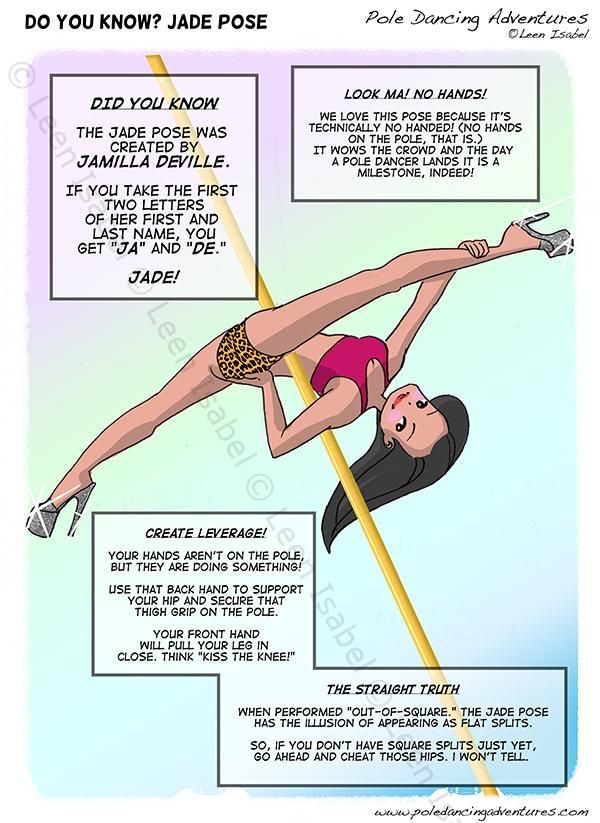 . Walking, Fireman Spin, step around & underarm turn (aka half pirouette), Arch, Back Slide (with leg extension), Roll, Cat Slide and Spring Up, Swan Slide, Back Hook
. Walking, Fireman Spin, step around & underarm turn (aka half pirouette), Arch, Back Slide (with leg extension), Roll, Cat Slide and Spring Up, Swan Slide, Back Hook
Lesson 2... Corkscrew, Forward Hook, Scissor Kick, Chair Spin, Squat, Sun Wheel (aka attitude), Body Wave
Lesson 3... Fan Kick, Cradle, Pole Climb, Pole Sit, Step & Kick, Under Grip Swan, Horizontal Hook Spin, Leg Circles, Sun Wheel off the floor & Hook
Routines 1, 2 & 3... Moves from lesson 1, 2 & 3 put together in a flowing easy to follow routine
Tone Up Session 1... Squats, Chin Ups, Tricep Push, Fireman Hold, Swan
Tone Up Session 2...Standing Row, Pull Down, Chest Fly, Oblique Twist,Lateral Leg Lift
Tone Up Session 3... Chin Ups with Leg Raises, Under Grip Knee Lifts, Cradle Hold, Chair Hold, Pole Tuck
Stretch Out... Stretches around the pole to stretch out muscles and increase flexibility
Extras.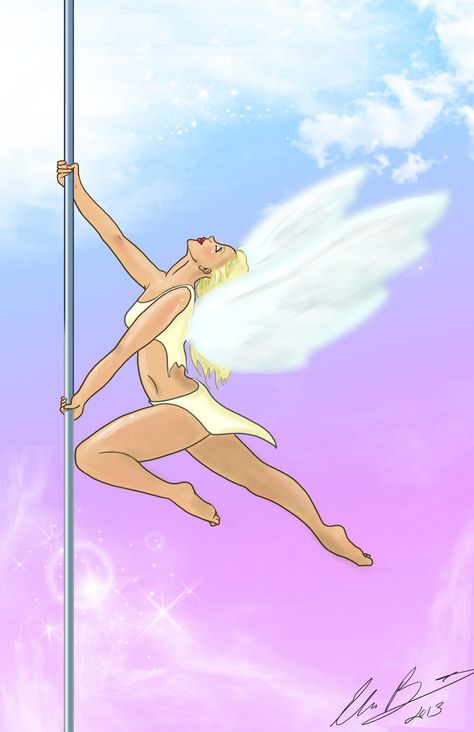 .. Behind the scenes, bonus routine, pole terminology, testimonials, credits
.. Behind the scenes, bonus routine, pole terminology, testimonials, credits
Bonus Routine... Squat, Body Waves, Walking, Step Around & Hook, Chair Spin, Underarm Turn, Scissor Kick, Pole Climb, Pole Sit, Swan Slide, Back Bend
The DVD is hosted by Justine McLucas from Ecole de Pole, one of the elite polers of Great Britain and a respected performer and instructor. Her skills and knowledge from a career as a professional ballerina and qualified Fitness and Pilates Instructor make her the ideal person to trust with your pole dancing tuition.
6 tips on how to learn to dance on the pole
Author: admin / February 24, 2020 / Category: News
There was a time when pole dancing was considered too sexy and inaccessible to many. But thanks to a shift in perspective and the advent of durable and commercial dance poles, this form of "sex dance" and exercise is beginning to gain acceptance from women and men. Today, pole dancing is considered a fun form of dance and exercise, strength training and can work for everyone, including men! nine0003
If you want to learn the art of pole dancing, here are 6 creative ways you can start learning pole dancing skills and techniques.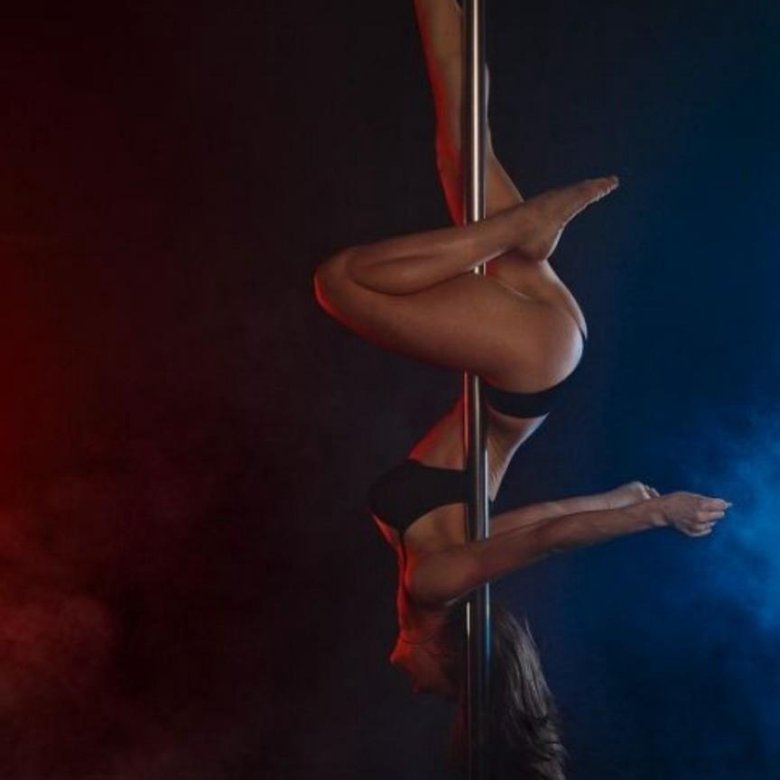
1. Check out online pole dancing lessons. Just use the search engines and you will be provided with a long list of resources on how to learn to pole dance. With online lessons, you can learn pole dancing at your own pace and in your spare time. But be careful when looking for an online pole dancing video lesson. Look for only the most trustworthy videos with relevant tips and suggestions so you can learn pole dancing in a safe way. nine0003
2. Attend group classes. Compared to private lessons and coaching, attending group classes can be a cost-effective way to learn pole dancing. Another benefit associated with group exercise is that it allows you to connect with other people who share the same passion and excitement. If you sign up for group classes, learning to pole dance becomes a social activity, allowing you to have fun and make new friends along the way. Here is a great half-dance school for beginners in Moscow. nine0003
3. Read online resources such as blogs, books and e-books about pole dancing.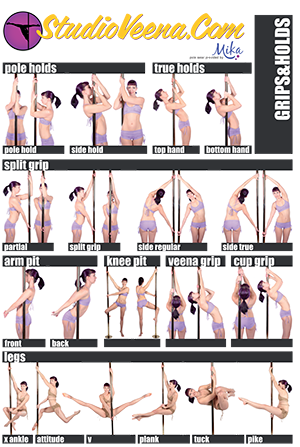 Just like videos, you can also count on tutorials and books to learn pole dancing. This will require patience and attention to detail, as you need to pay attention to pictures and step-by-step instructions. This is the recommended approach for people who want to relax and don't want to be pressured by other dancers and members.
Just like videos, you can also count on tutorials and books to learn pole dancing. This will require patience and attention to detail, as you need to pay attention to pictures and step-by-step instructions. This is the recommended approach for people who want to relax and don't want to be pressured by other dancers and members.
4. Sign up for private pole dancing lessons. If you have the time and money, a private lesson with an experienced pole dance teacher is the best option. During a private lesson, attention is paid to you, and your needs and shortcomings are easily identified. nine0003
A dance teacher can also provide you with personalized help and suggestions to help you hone your technique. Be aware that enrolling in a private dance class can be expensive. But if you are looking for a personalized and quality tuition, private dance lessons are your best bet.
5. Another way to get good education is to use DVD and Youtube. This can help you get the guidance you need while having fun along the way. This is the recommended approach if you want to learn pole dancing in the comfort of your own home. You can pause some scenes or play back scenes and movements if you find it difficult to follow the video. nine0003
This is the recommended approach if you want to learn pole dancing in the comfort of your own home. You can pause some scenes or play back scenes and movements if you find it difficult to follow the video. nine0003
6. Attend pole dancing parties. Yes, pole parties can be held and can be a great way to learn how to pole dance. You can invite your friends who also want to learn some tricks and dance moves. You can also use this as a theme for your next birthday party or meeting with friends.
How to start half-dance
Irina Malchukova
opened a half-dance studio
Author profile
I taught pole dance for six years, and for five years I ran my own pole dance studio.
To do this, I completed two special courses and participated in several master classes, my productions won prizes in regional competitions more than once.
I'll tell you how to start practicing for a beginner, what to buy, why half-dance can replace fitness and how to choose the right pole dancing studio.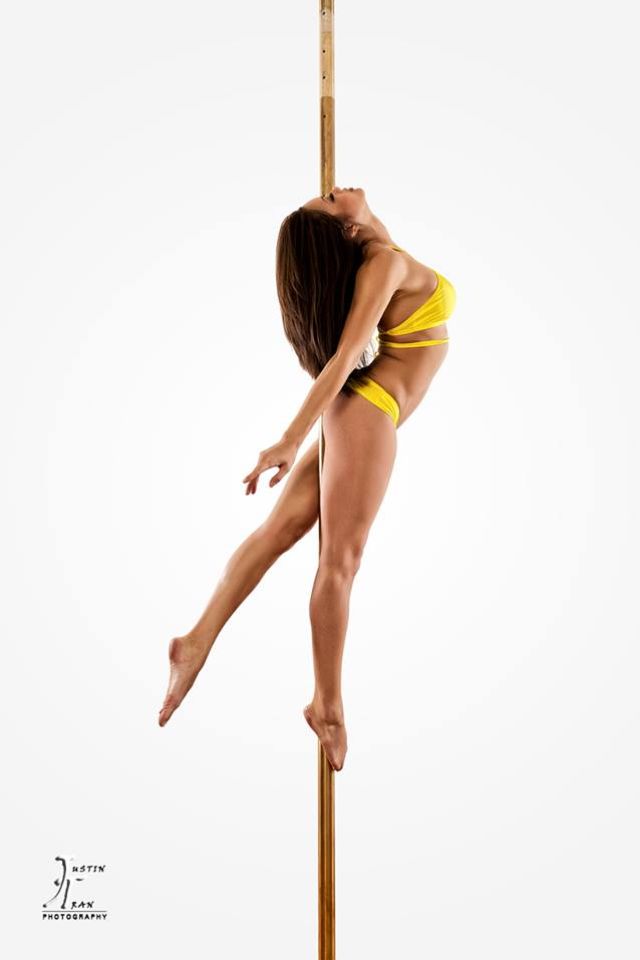
What is pole dance
Pole dance is a pole dance that combines elements of choreography, gymnastics and acrobatics. In fact, this is a general concept. Now there are several directions that differ from each other: Exotic Pole Dance, Pole Art and Pole Sport. I will tell about them further.
Pylon, or pole, a polished metal tube for grasping with hands and clutching with legs or other parts of the body. Its diameter can be 40, 42 and 44 mm.
/motivation-sports/
Work out with a trainer and try different activities: 7 tips to help you fall in love with sports
Usually made of stainless steel, this ensures a smooth glide and at the same time a good grip on the skin. Pole dancers don't like it when a pole is called a pole.
There are static poles - about tricks that are performed on such a pole, they say "in static", and also rotating ones - dancers say "in dynamics". In what follows, I will use these terms.
Most often, poles in professional studios have two modes at once. Due to simple manipulation, "dynamics" turns into "statics". In competition, dancers must be able to do tricks on both static and rotating pylons. nine0003 These are poles, or pylons, they were in my studio. I twisted the pylon from dynamics to static with the help of a key. Photographer: Vyacheslav Ruchkin
They fix the pylons in different ways:
- Spacing between floor and ceiling.
- With one fixed fixing to the floor or ceiling only.
- Two fixed fasteners at once. This option is the most reliable.
One fixed mount in studios is also acceptable. If the pole is installed only at a distance in a dance school, I do not recommend doing complex tricks there or spinning strongly. nine0003
There are also portable pylons - these are structures that can be transported with you or quickly assembled on site. Usually they are used for performances, since it is not safe for students to study on them in a constant stream.
The elements of are called tricks that are done on a pole. There are several levels of the pylon where they are performed:
- Upper - acrobatic tricks are performed here at a height of more than two meters above the floor. nine0060
- Medium - perform rotations, plastic or dynamic elements at a height of 1-1.5 meters above the floor.
- The lower one is the stalls. Usually this is plastic or acrobatics, which is performed both with and without a pylon.
In 2021, pole sport was officially recognized in Russia. This means that the Ministry of Sports of the Russian Federation will coordinate all the rules by which half-dance competitions are held, there will be sports categories for participants, judges will have to undergo certification, and half-dance federations will have to be accredited. nine0003
Order of the Ministry of Sports of the Russian Federation, in which half-dance was included in the register of sports
Dance schools offer half-dance classes not as a sports discipline, but as exercises for stretching, working out the muscles of the legs and arms.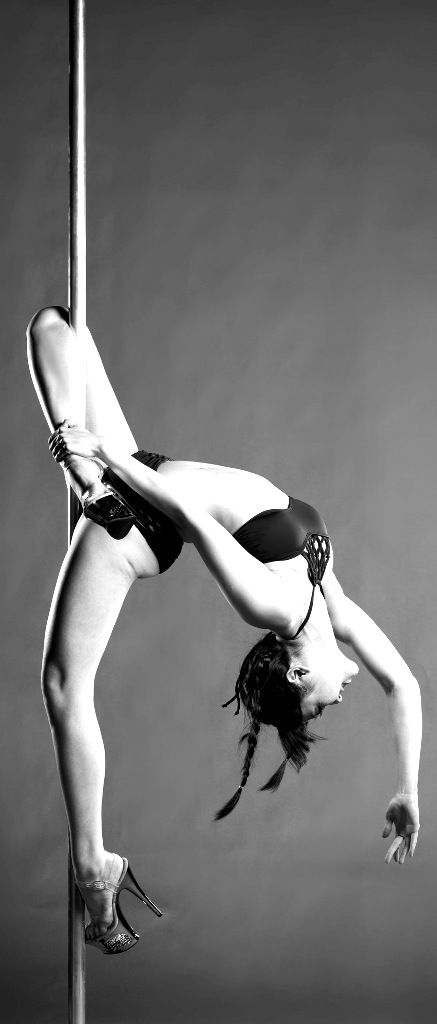
| These are elements on the pylon, or tricks |
Half-dance directions
Pole Sport or FitnessIn this direction, most of the time is devoted to trick and power elements on the pylon. There are about 70% of tricks in the performance, and 30% of the choreographic or parterre part. To simplify, half-sport is similar to gymnastics. nine0003
Competitions are often held in this direction. Mandatory elements are defined for them - those that a dancer must be able to do and show at the competition. Each element is evaluated by points: they look at the purity of execution, clarity of lines, and other criteria. Sometimes there are restrictions on touching the floor during a performance.
Pole-sport is most similar to artistic gymnasticsPole-dance directions
Exotic Pole Dance This is a dance direction where the emphasis is on choreography, plasticity and musicality.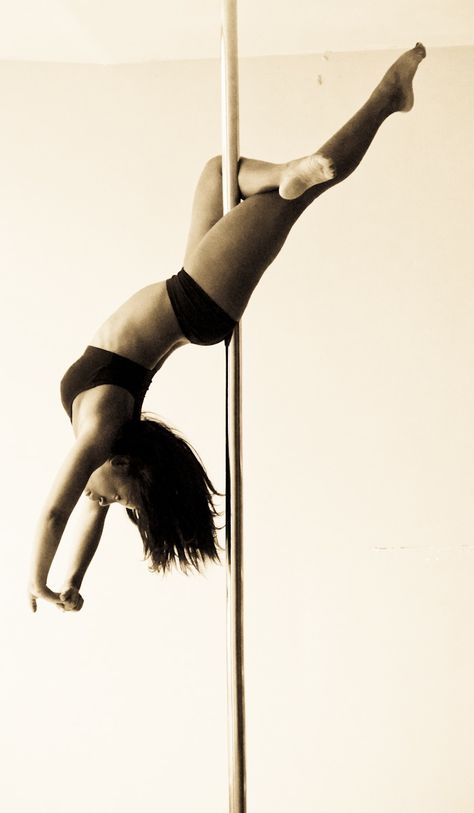 Exotic is danced in special shoes - strips, they have a high platform and heels. This is the most feminine direction. If compared with others, we can say that exotic is strip plastic with a pylon, where there is a trick part. nine0003
Exotic is danced in special shoes - strips, they have a high platform and heels. This is the most feminine direction. If compared with others, we can say that exotic is strip plastic with a pylon, where there is a trick part. nine0003
Important: in exotic half-dance you don't undress completely. You can take off some item of clothing in the room - gloves, a neckerchief, ears from your head. But it is forbidden to expose the genitals or breasts.
This is what special shoes for exotics look like - strips. Photographer: Sergey PatrushevExotic pole dance is also divided into several types.
Exotic Flow features smooth and slow movements. The ratio of tricks and choreography is about 20/80. It does not require complex elements, but acrobatic stunts are more like dance accents. The main thing in this type of dance is the choreography at the pylon and the parterre technique at the very bottom. nine0003 Smooth slow dances exotic flow
Exotic Hard - more energetic and sharp dance.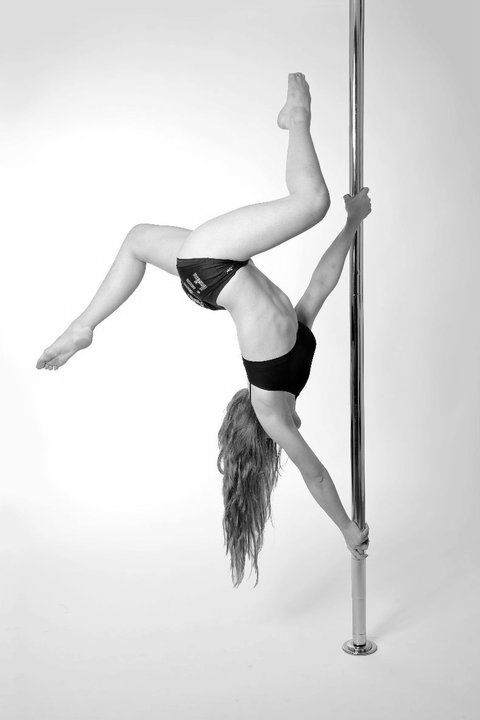 The ratio of trick and choreographic parts is 70/30.
The ratio of trick and choreographic parts is 70/30.
The main thing here is the ability to perform acrobatic elements on the pole in strips. The image and idea of the dance are also important.
Energetic exotic hardOld School is the most sensual and feminine direction. The ratio of tricks and choreography is 40/60.
Particular attention is paid to musicality, dance elements, and tricks are chosen as smooth as possible. nine0003 Sensual old school direction
Pole dance direction
Pole Art This is a harmonious combination of power elements and choreography, that is, 50% dances, 50% tricks. Artistry and presentation are important here. For example, sometimes they dance a modern stage dance, only with a pylon. At pol-art competitions, revealing and defiant clothing, sexual movements are prohibited.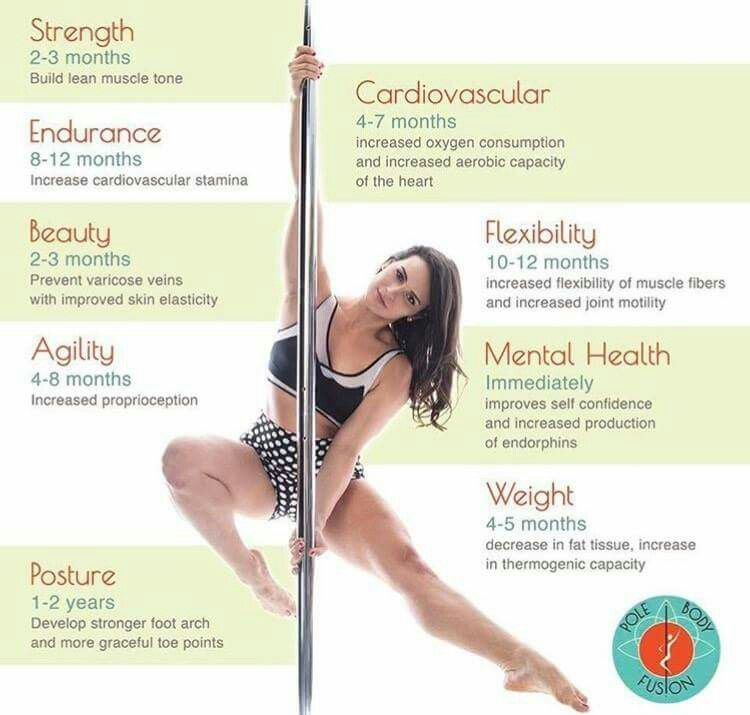
The main difference between half-art and exotic is that it is not a seductive dance that shows sensuality and femininity. Half-art is danced not in strips, but barefoot or in special shoes, the clothes are strict, not sexy, there are no playful movements or coquetry with the audience. If in exotic the task is to seduce the viewer, then in half-art it is to tell a story, show the emotions and experiences of the hero. nine0003
All directions of half-dance are intertwined with each other. It will not be possible to dance exotic or art without tricks, so the basic elements of half-sport will have to be mastered. At the same time, staging a half-sport number will not do without choreography.
I recommend combining two directions: trick part and dance part.
Pole art is reminiscent of stage dancingBenefits of pole dance
Half dance seems to be easy because the dancers' movements are light.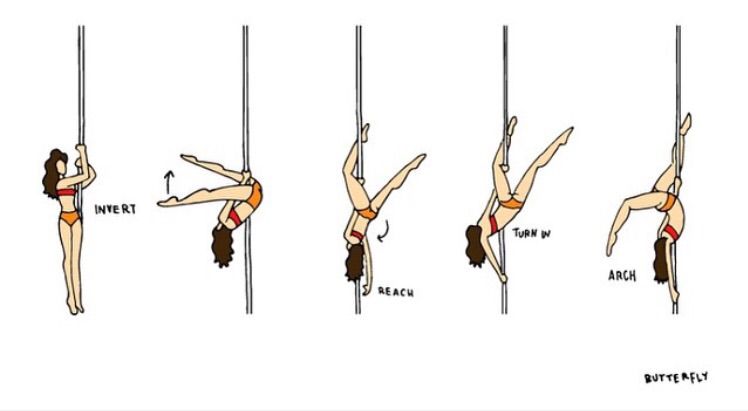 In fact, you need endurance, flexibility, coordination. nine0003
In fact, you need endurance, flexibility, coordination. nine0003
Calorie consumption calculator for half-dance classes
One session actually replaces a circuit training, where exercises for different muscle groups are repeated several times - the same number of calories can be spent.
In addition, pole exercises train the skill of controlling the whole body. You need to be able to keep yourself on your hands, on your feet, to maintain balance in static. Different muscles work, over time the body becomes toned. Due to twists on a rotating pylon, the vestibular apparatus is trained. nine0003
Abs and back. Many tricks must be done statically. For example, handstands. In this case, all the stabilizing muscles are involved, the press and back work, the ligaments are strengthened, strong core muscles are formed.
/list/sports-myths/
“We need to close the carbohydrate window” and 9 more common myths about sports and health
Upper body. Use your hands to climb the pylon and hold your own weight. Shoulders, biceps and triceps, pectoralis major and other chest muscles, upper back work. nine0003
Use your hands to climb the pylon and hold your own weight. Shoulders, biceps and triceps, pectoralis major and other chest muscles, upper back work. nine0003
Lower body also works. For example, there are hangings on the legs - if you do not strain your leg muscles, you can fall off the pylon. Body weight must be maintained with the help of the muscles of the thigh and calves, gluteal muscles. Some entry-level twists work the upper thighs, glutes, and lower back at the same time.
Stretch - there are beautiful elements that require stretching the legs and a flexible back. I recommend attending stretching classes separately. If this is not possible, performing tricks on the pylon will eventually develop plasticity anyway. nine0003
In addition, tricks must be constantly practiced - this requires stamina.
I will also note: many people gain self-confidence, because each mastered trick is a small victory.
Who suits half-dance
The most difficult thing is to decide to come to the first class. Popular newbie fears:
Popular newbie fears:
- I can't do it;
- everyone already knows how, but I don't know anything;
- I don't have enough strength, I won't lift myself onto the pylon;
- I don't have the ear to dance;
- I am overweight;
- everyone has splits, but I don't have a stretch.
In fact, everything is not so difficult. You can start from scratch without any preparation.
/fitness/
How to save money on sports
Even if a person was a professional athlete or dancer, he too may fail at the first training session. And this is absolutely normal, because pole exercises are a special load: the work of the whole body, coordination, grip due to the skin. nine0003
Usually students are divided into groups of beginners and those who have been studying for a long time. This is done for convenience: everyone works out the same tricks, can see each other's mistakes or direct a neighbor on the pylon in the right direction. Beginners can safely join groups of beginners: they are not far behind in the program and will quickly catch up with their level.
Beginners can safely join groups of beginners: they are not far behind in the program and will quickly catch up with their level.
I note that the pole is an amazing thing: at the very first training, a person understands whether it is him or not. In six years, I have never met a person who quit half-dance after three, five, ten classes. Usually a student lights up and stays for a long time, or realizes that he is interested in another sport, and is no longer interested in half-dance. nine0003
Development is gradual. First you start to hold on to the pylon, then you know how to spin and climb it correctly, and then a whole world of tricks and combinations opens up. I want to do and try everything, capture it in a photo or show it in a dance number. I would say that the excitement turns on: can I do it. It moves forward, so classes are rarely abandoned.
But half-dance is hard. You have to work on yourself, laziness, fears and pain. Sometimes you have to work out the same element twenty, thirty, forty times - this can get boring and exhausting. You really need to catch fire and be hardy - without this, nothing will work. Sometimes you have to wait a long time for results - both in tricks and in terms of physical form. nine0003
Dance studios often hold open lessons or give away the first lesson for free. It is better to use this opportunity to try half-dance and understand whether you like it or not.
How are the half-dance classes
Warm-up. At the beginning of each lesson, regardless of direction, 10-15 minutes - warm-up from head to toe.
If the student is late, he warms up on his own or is not allowed to the lesson. Without warming up the muscles, you can get injured - this part of the workout is mandatory. In semi-sports, attention is paid to the joints, and in exotics, they can include light basic dance elements: various waves, hip and chest rotations. nine0003
Main part. After the warm-up, the main part comes: in exotic or art, they learn the movements and the connections between them or repeat what they learned earlier. As a rule, it takes from three to six lessons to practice the dance, and from two to four, depending on the complexity, to practice the dance.
As a rule, it takes from three to six lessons to practice the dance, and from two to four, depending on the complexity, to practice the dance.
/stretching/
How I Became a Stretching Instructor
In semi-sports, the lesson is different: the trainer explains and shows the trick that needs to be mastered and done. Up to two people can practice on one pylon. If more, the students are already uncomfortable: they will not have time to fix the element. nine0003
Periodically repeat old tricks or twists. This shows progress well: you can compare how the element was done before and how it is done now. If the student already knows several tricks, the coach comes up with combinations - when you go from one element to another.
Learning goes from simple to complex. For example, at first there will be simple elements like a “barrel” - they are needed so that the student gets used to the grip with his hands and steps over the fear that he will fall from the pole.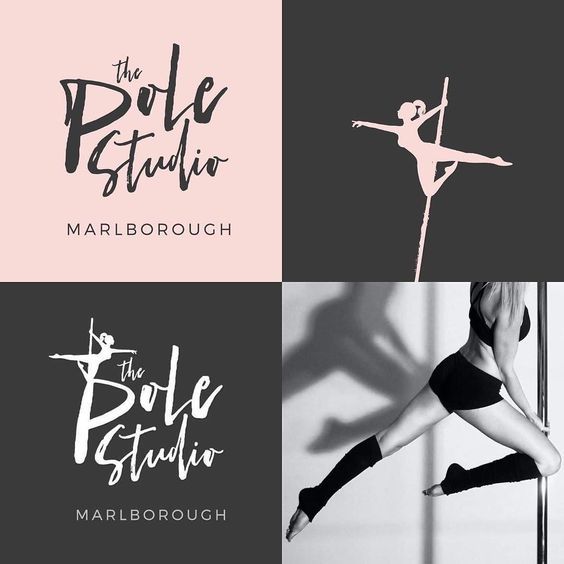
At the first lesson, it seems that you are not holding on and constantly slipping, this is normal. Then the hands get used to it, stop sweating, there is strength in the muscles and self-confidence. nine0003
For half-sports, there is an example program for students to learn tricks. Of course, everyone goes at their own pace, but after a month or two you need to be able to do the simplest grips, for example, hanging on the far and near leg, on the elbows.
Beginner's version of twist - "barrel". Source: body-bar.ru Hanging on the far leg is already more difficultEvery studio must have safety mats: you learn to perform complex tricks only with them. But beginners are also offered to take a mat so as not to get injured. nine0003
There is always alcohol or vodka and a rag in the studio - this is necessary to degrease the pylons, otherwise there will be no adhesion. Students can also use talcum powder or powder that dries their hands or feet so that they do not slip on the pole and do not roll off it. There are also other means for this, such as magnesia.
I don't recommend using talcum powder or anything else, otherwise your hands and feet won't get used to the grip - it's better to learn how to hold on right away without traction aids. Moreover, it is forbidden to use them at half-dance competitions. nine0003
Cooldown may vary between dance studios. Usually, after the dance part of the exotic, there is a slight stretch, and in half-dance they finish off the muscles: they pump the press, sometimes with a pylon, do push-ups, stand in the plank.
How are performances and pole dance competitions
Reporting concerts. Each studio holds reporting concerts, in which everyone can participate. Coaches prepare group numbers - not only dance, but also stunts, as well as solo performances when a person performs alone. nine0003
As a rule, they start preparing for the reporter in advance - several months in advance. Sometimes concerts are held not in the studio, but in a cafe, restaurant, or even in the Palace of Culture. These are bright events in the life of students - their relatives and friends come to support them, and the dancers receive applause and a sense of the stage.
Competitions. They are held in all directions of half-dance.
In half-sport, you need to show combinations of tricks that are included in the mandatory program. They must be performed on two pylons: static and rotating. There must be a dance part, but it rather fills in the gaps between the tricks. nine0003
Participants usually qualify for local city competitions or video selection. Competitions are easy to find: you can simply google or search for groups of competitions in social networks. The coaches themselves also follow the latest information and invite students to participate. Anyone can apply for the competition.
/spravka-dlya-sorevnovaniy/
How to apply for a certificate for participation in competitions
There are several categories: beginners, intermediate level, pros, children, duets, group performances.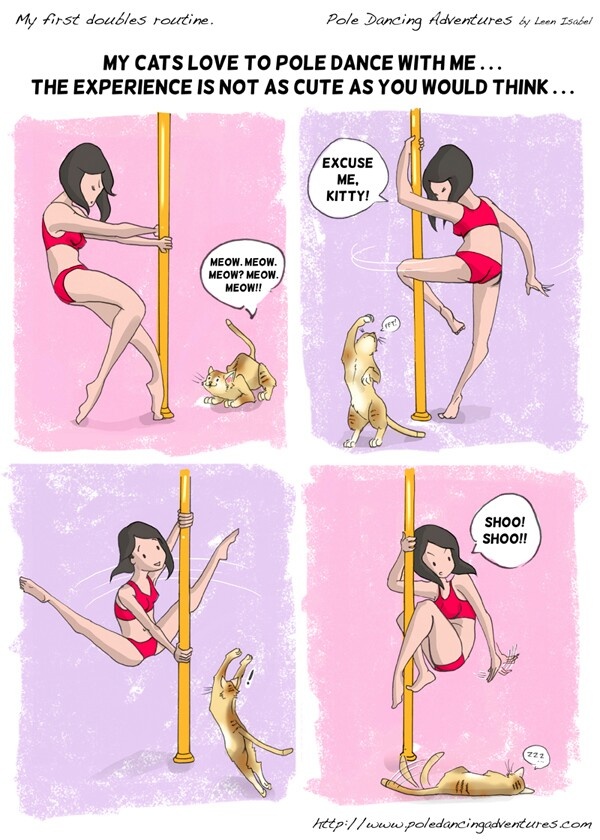 Well-known coaches and dancers are invited to the jury. All participants receive certificates or diplomas for participation, and the winners receive medals and prizes. nine0003
Well-known coaches and dancers are invited to the jury. All participants receive certificates or diplomas for participation, and the winners receive medals and prizes. nine0003
In exotic there is no obligatory condition to dance with two poles, the dancer can choose the pole mode independently. But you can only perform in strips - the jury evaluates how well the dancer knows how to use shoes. There are also categories here, and sometimes participants are divided into areas: old school, flow and hard.
As part of the competition, invited jury members often give master classes and hold demonstration performances.
Preparation for competition takes at least three months. With pole-sports, the most difficult thing is to wait until the pole-dance organization hosting the competition releases a list of required elements, and then choose the required number of them. Each element is worth a certain point. Therefore, the dancer collects the maximum number of points from the elements that he can do.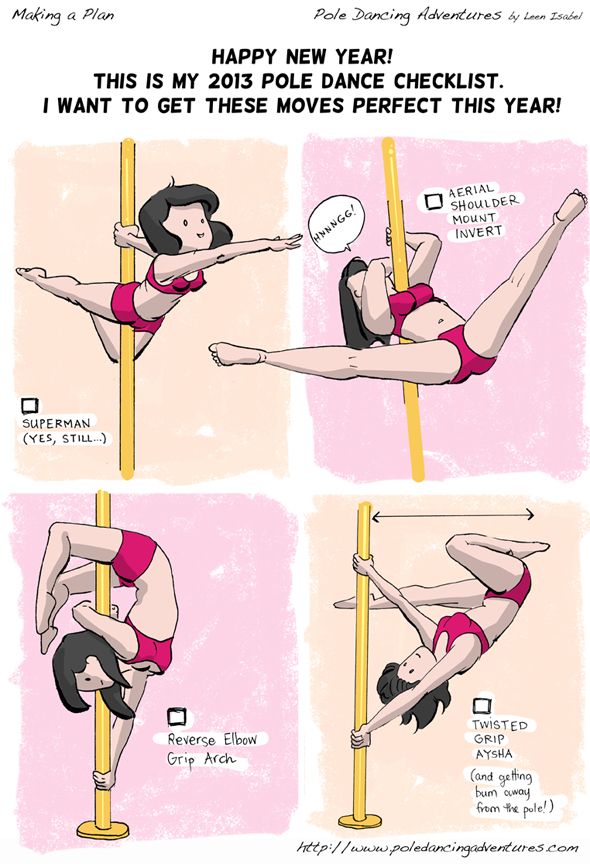 nine0003
nine0003
In addition, you must perform all the tricks according to the requirements: hold out for a specific number of seconds, enter and exit the element correctly, observe lines or corners. If the participant fell, did not get the trick right the first time, slightly slipped from the desired position along the pylon, or did not hold out for the required number of seconds, he receives a penalty.
The jury also evaluates the choreography, artistry, image, presentation. For example, you can’t sing along during a performance or look at the floor. If something went wrong and the participant left the stage during the performance, his candidacy is removed. nine0003
Competitors in semi-sports have strict appearance requirements: a swimsuit or shorts must be of a specific length, hair must be tied up, make-up is not bright. If a participant has underwear visible, he receives a fine for this.
Such stringent requirements are due to the fact that half-sport federations have been fighting for a long time to be included in the list of Olympic sports - and in 2021 it happened.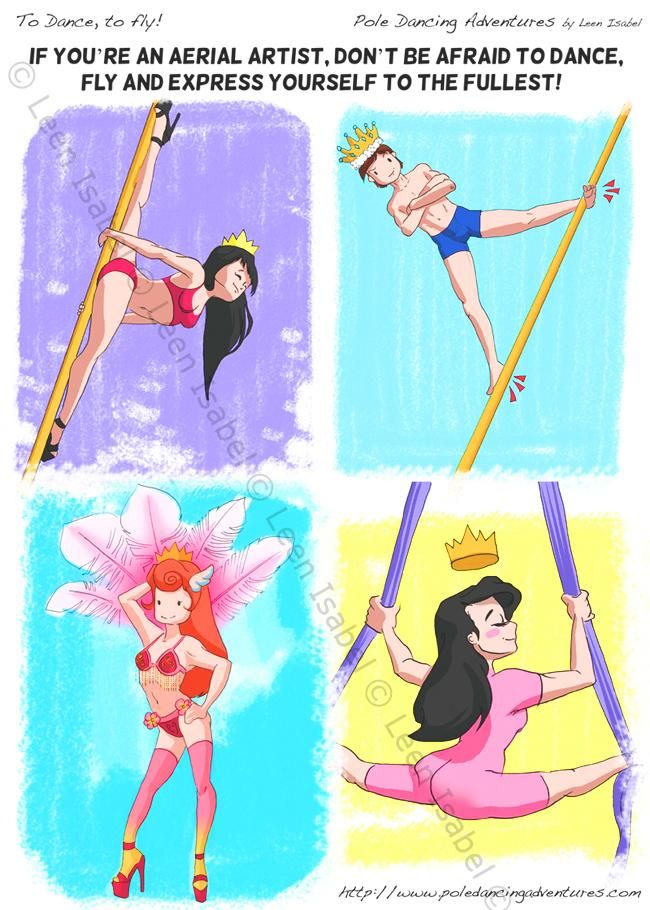
Exotic competition rules are not so strict, preparation for them is easier. But even here there are requirements: to do a certain number of tricks in conjunction, to follow the rhythm of the music, to include choreography and acrobatics in the stalls. nine0003
What you need to practice half-dance
Patience. The main thing is the desire and understanding that everything will not work out right away. Any coach also once slid down from a pole, could not climb a pylon and was afraid to hang on one leg upside down.
Clothes. For training, you need to take short shorts, a top or T-shirt, socks for warm-up and cool-down. Tricks in semi-sports are performed barefoot, and in exotics - in special shoes.
/sportstat/
What kind of sports do Russians do
The more revealing the clothes, the better: you need a good grip on the pole, which comes at the expense of the skin.
Shoes. Exotics need shoes - strips. It is not necessary to buy them right away, but you need to bring at least high heels with you. Sometimes in studios they are not allowed to dance in ordinary sandals, as they scratch the parquet. Or they ask you to seal the heel with adhesive tape - this can be found out in advance when signing up for classes.
Exotics need shoes - strips. It is not necessary to buy them right away, but you need to bring at least high heels with you. Sometimes in studios they are not allowed to dance in ordinary sandals, as they scratch the parquet. Or they ask you to seal the heel with adhesive tape - this can be found out in advance when signing up for classes.
Strips vary in height: from one, which has a heel height of 15 cm, platforms - 5 cm, to five, which has a heel height of 25 cm, platforms - 15 cm. There are sandals, boots and even over the knee boots. nine0003
Beginners should start with ones. In the classes, you will not only have to learn how to stand and move on them, but also work out the elements on the bevels, that is, on the tips of the platform.
Knee pads. They are needed for exotic. There are many elements that must be performed while kneeling at the pylon. There are also tricks with jumping on your knees - here knee pads help soften the blows.
Bruise remedies. It is better to take care of possible bruises in advance - they can be in the most unexpected places. But this is temporary - as a rule, after two or three months, bruising is no longer a concern. Even at first, calluses may appear on the hands due to practicing the grip. Later, the skin will get used to it, and this problem will go away. nine0003
For accelerated healing of bruises, you can use ointments with heparin, and for the treatment of corns - a moisturizer and cream with urea in the composition.
Form for classes. Source: pilonia.ru This is what exotic strips look like. Source: pdmarket.netWho shouldn't practice half-dance
People with severe chronic diseases, in particular, diseases of the heart, lungs, nervous system, kidneys, diabetes mellitus, should not practice half-dance. That is, for those for whom any intense physical activity and leg injuries can be dangerous. nine0003
When to consult a doctor before exercising - Mayo Clinic
In addition, classes may be contraindicated for people who have diseases of the spine and joints when they should not be overloaded, or severe skin diseases that may interfere with pole training or be aggravated by friction.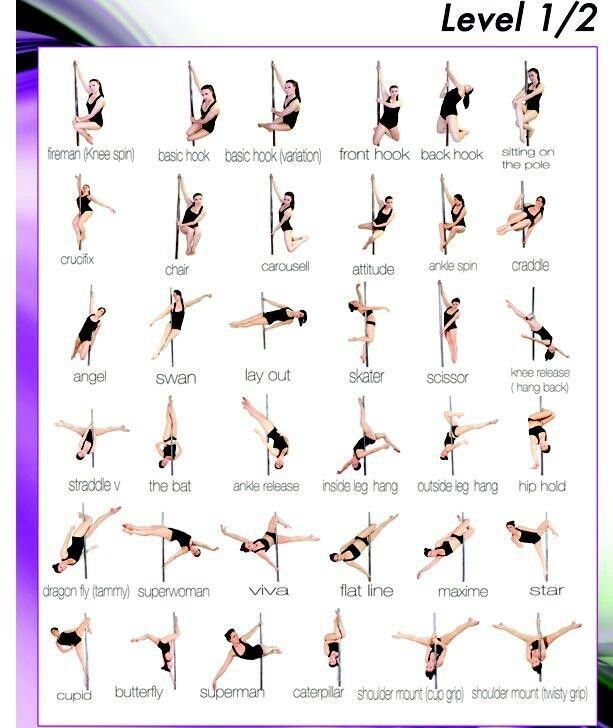
This sport is also not suitable for pregnant women, as during the performance of tricks you can fall or hit your stomach.
/sport-pregnancy/
How to stay fit and healthy during pregnancy
In other situations, everything is decided individually. I have low blood pressure and problems with the vestibular apparatus, but I have been doing pole sports for six years. In any case, you first need to consult a doctor, explain what the loads will be, so that he gives permission for classes. Usually, studios do not require a doctor's certificate, but I recommend that you insure yourself and take care of your health on your own. nine0003
Safety precautions for half-dance classes
Half-dance classes are classified as traumatic, so safety precautions must be observed. Each studio introduces the student to the signature requirements.
Leather. On the day of class, you can not use cream, lotion or body oil, go to the solarium or sunbathe - in this case, suntan creams or sunscreens are also applied.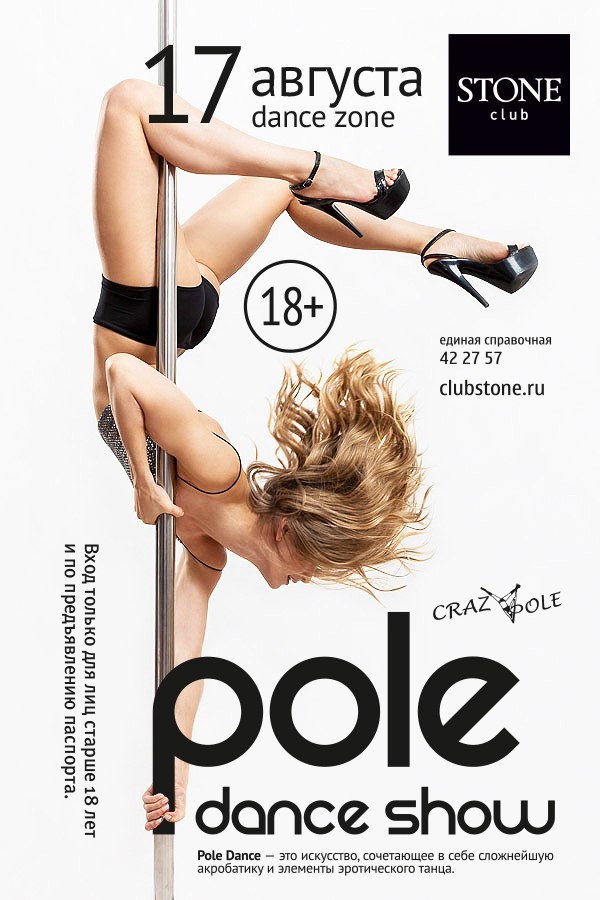 Any substances on the skin impair grip on the pole and increase the risk of slipping off the pole. nine0003
Any substances on the skin impair grip on the pole and increase the risk of slipping off the pole. nine0003
5 frequent injuries during solo sports
Jewelry. They must be left at home - they will interfere. For safety reasons, the coach must ask to remove all rings, earrings, beads, chains, bracelets, sharp hairpins and piercings.
Hairstyle. For semi-sports, it is better to collect hair, as it will interfere, and can also get tangled behind the pole.
For example, at one performance, my student's hair got caught in the bottom of the pole. Since she was twisting upside down, her hair was wound and caught. She was not injured, but she had to hang upside down while we pulled her hair out. nine0003
But on exotics, hair is usually left loose, because it is used for dancing: they twist or wave their heads, playfully throw their hair back with their hands.
Food. The last meal should be approximately two hours before training.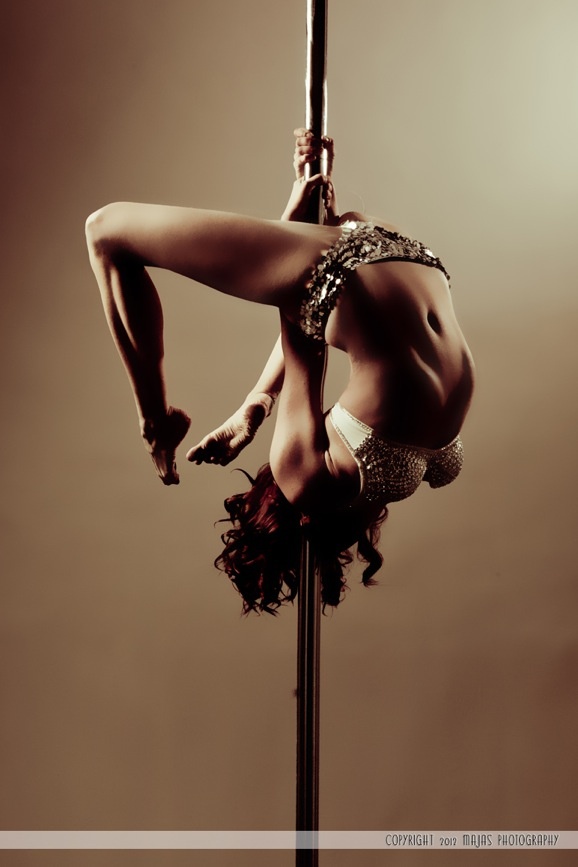 Otherwise, twists on the pylon can make you feel sick.
Otherwise, twists on the pylon can make you feel sick.
Behavior in class. You can start training only after a warm-up, perform elements on mats and with a trainer's insurance. You can’t jump off the pylon, if it’s not provided for by the trick, it’s unacceptable to relax the holding muscles - you can slide off the pylon, dropping onto your shoulders or forearms. nine0003
When performing tricks, it is important to keep a distance between yourself and other participants. In exotic classes, you need to work out the trick first with bare feet, and only then in strips.
What kind of injuries can you get during half-dance lessons?
Half-dance lessons require attention and concentration. There were cases when the dancers spun strongly, flew off the pylon and got a fracture. Sometimes equipment failed: it was not installed securely enough or poorly secured. nine0003
The most common and minor injuries that you can get in class are bruises or abrasions from hooks and hangs.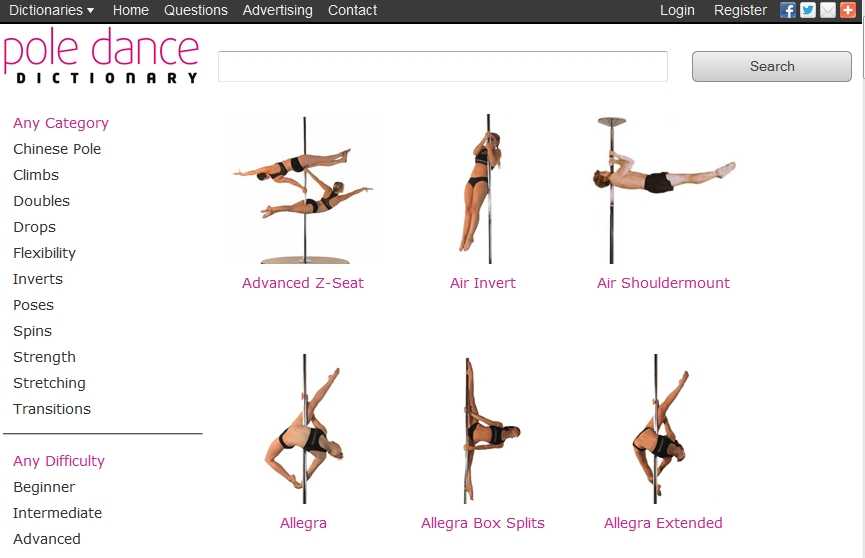 At the beginning of training, until the skin is used to it, they will occur much more often. I have sensitive skin, so even after a few years, bruising periodically appeared.
At the beginning of training, until the skin is used to it, they will occur much more often. I have sensitive skin, so even after a few years, bruising periodically appeared.
/list/sports-health/
12 important questions for sports doctor Artem Ryzhenko
There is a high load on the joints and ligaments during the classes. For example, when performing some elements, the arms should be straight - in fact, the emphasis is on the wrist. If this causes discomfort, wristbands or elastic bandages can be used. nine0003
Six years later, I had a problem with the wrist of my left supporting hand - I always focused on it for racks and other elements.
It is very important to control your feelings: there should be no pain. If something hurts after completing the element, you need to rest. If the situation persists, you should consult a doctor.
And if a sprain or other minor injury occurs during the session, the training must be temporarily stopped. Until the body recovers, loading on the pylon is prohibited. nine0003
Until the body recovers, loading on the pylon is prohibited. nine0003
To avoid a fracture, it is important to follow safety precautions. The main thing is to never do tricks without mats and not let go of your arms and legs if the clutch has not happened. When it is clear that you are not holding on to the pole upside down, you need to tilt your head to your chest and slide down the pole to the floor on your shoulders. You should never tilt your head back to your back, so as not to fall in this position and injure your neck.
How to choose a pole dance school and coach
Equipment. It is necessary to check if there are mats, and ask how the poles are fixed, what company the pylons are installed. The highest quality ones are from Pole4You. Your health and life depend on it. nine0003
Teacher training. It is important whether the studio coaches have certificates confirming the right to teach half-dance. Otherwise, they may not properly apply the load, causing injury.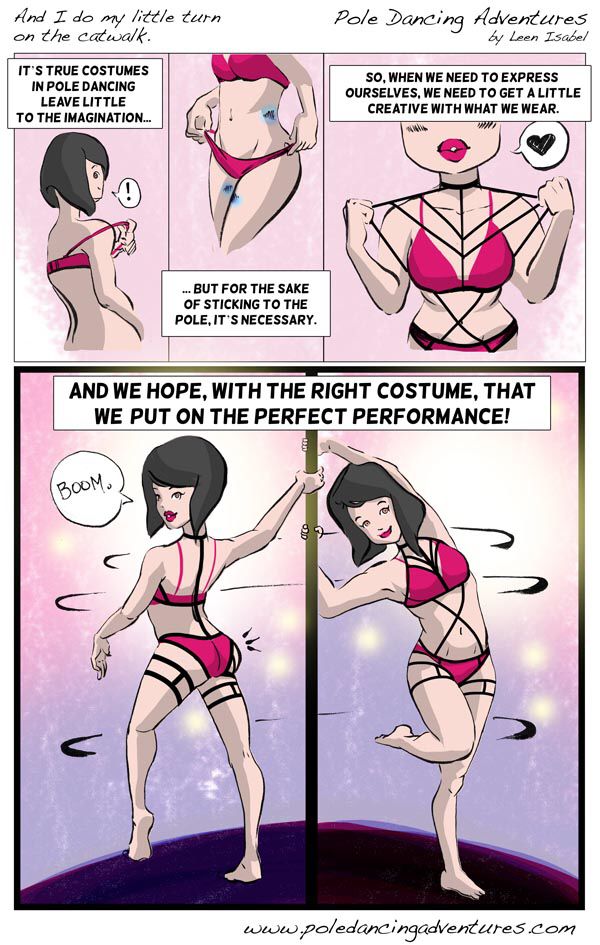
/list/dance-schools/
From waltz to bachata: where they will learn to dance in Moscow
It is necessary that the trainer learn the methods of teaching half-dance, go through theory and practice, pass tests and exams. Training cannot be less than 96 hours, because otherwise you cannot master the program. nine0003
Certificates are issued by half-dance studios with titled teachers and extensive experience. Typically, such organizations belong to a pol-dance federation or represent it themselves.
Competitions. It is important what competitions teachers and students of the studio take part in and how often: if the school is active in the outside world, then it will be more interesting to study there.
Number of students per pylon. There should not be too many students in groups - a maximum of two people per pylon. Otherwise, there will be no time to practice tricks. nine0003
First conversation with the trainer.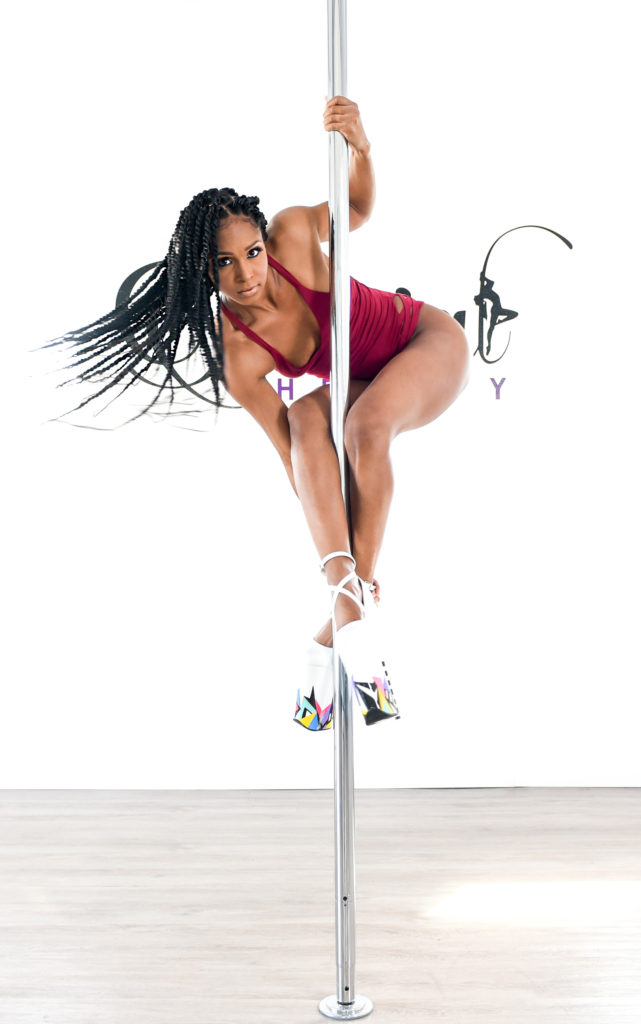 The teacher needs to know about the physical condition, diseases and contraindications. You must be told what you can and cannot do in class, and you must sign an agreement with the safety rules.
The teacher needs to know about the physical condition, diseases and contraindications. You must be told what you can and cannot do in class, and you must sign an agreement with the safety rules.
Communication with the trainer. It depends on him what mood the student is in, how he progresses, what results he achieves. You should be comfortable with the coach. If this is not the case, you need to change the coach, otherwise effective training will not work. nine0003
Trainer qualification. He must have completed half-dance courses. It is also worth asking about experience: how many years he has been teaching, what successes his students have. It is good if in the past the coach was involved in professional sports or dancing, usually in this case the quality of teaching is higher.
It is also important how clearly the coach explains the technique of performing tricks and how he monitors safety: does he insure each student, does he require the use of a mat.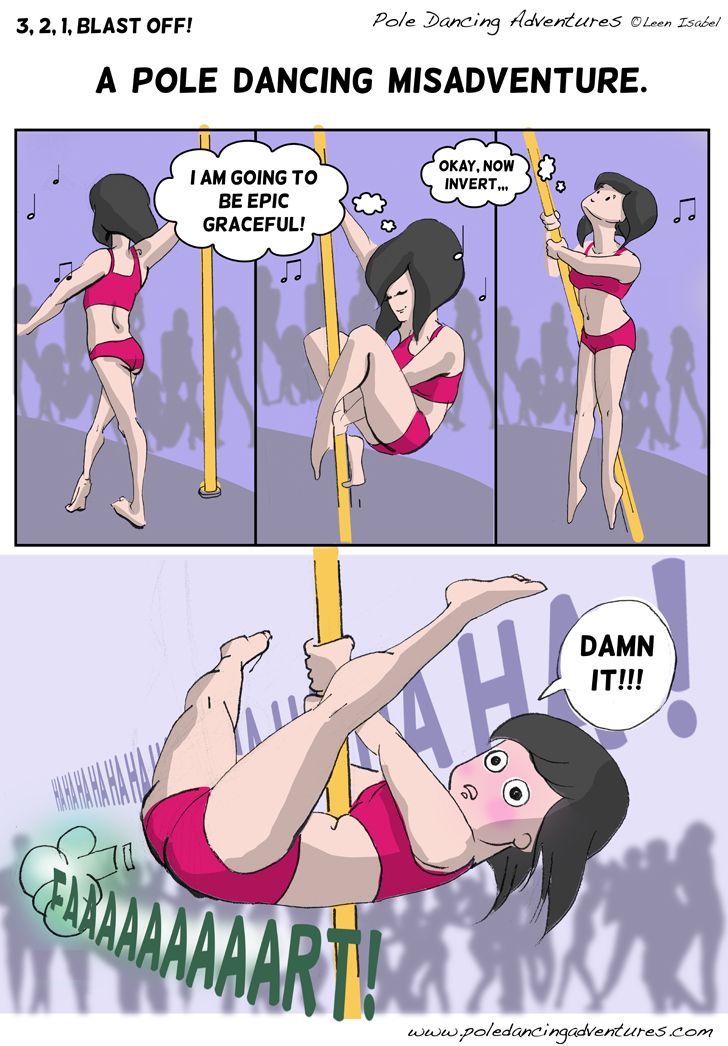 nine0003
nine0003
How much does pole dance cost?
Regular classes. Usually dance studios offer several subscriptions to choose from: 8, 12, 16 group lessons. It makes no sense to go to training less than twice a week, that is, you need at least eight classes a month.
To practice semi-sports, you will need to spend money on a uniform and a subscription. Exotic half-dance requires a lot of money: you will also have to buy special shoes and knee pads. Then you will only need to pay for a subscription to the studio and change clothes and shoes as they wear out. nine0003
/list/hochu-mogu/
8 extreme hobbies that cost people a lot of money
Half-sport classes in the first month cost from 6500 R
| Subscription for 8 lessons | 2500-5000 R |
| Shape: top and shorts | 3500 R |
| Socks | 500 R |
Subscription for 8 lessons
2500-5000 Р
Uniform: top and shorts
3500 R
Socks
500 R
Semi-exotic classes in the first month cost from 13 000 R
| Strips | 5000 R |
| Subscription for 8 lessons | 2500-5000 R |
| Shape: top and shorts | 3500 R |
| Knee pads | 2000 R |
Strips
5000 R
Subscription for 8 lessons
2500-5000 R
Uniform: top and shorts
3500 R
Knee pads
2000 R
Participation in competition costs - 9042 For example, the participation fee starts from 1000 R. You also need to sew or buy a special suit - this is at least 3000 R. New strips for competitions are usually not bought. The dancer gets used to those in which he trains, in new ones there is a higher risk of falling.
You also need to sew or buy a special suit - this is at least 3000 R. New strips for competitions are usually not bought. The dancer gets used to those in which he trains, in new ones there is a higher risk of falling.
You also need to pay for individual lessons with a trainer to work out the number and rent the studio hall for independent training - they are needed to consolidate the result. nine0003
A personal lesson with a trainer costs an average of 1500 R, but its price can reach up to 3000 R. The number of lessons depends on the competitions themselves, the level of training, the complexity of the number. The minimum number of trainings for setting a number is four. Renting a studio for self-training will cost about 5,000 R for 10 times.
Preparation for pole dance competitions will cost about 15,000 R
| 4 personal lessons with a trainer | nine0091 6000 Р|
| Room rental for 10 self-study | 5000 R |
| Special suit | 3000 R |
| Participation fee | 1000 R |
4 Personal classes with coach
6000 R
Renting of the hall for 10 independent classes
5000 R
Special costume
9000 3000 3000 RFund for participation
1000 R
Remember
- Pole dance is a pole dance that combines elements of choreography, gymnastics and acrobatics.

